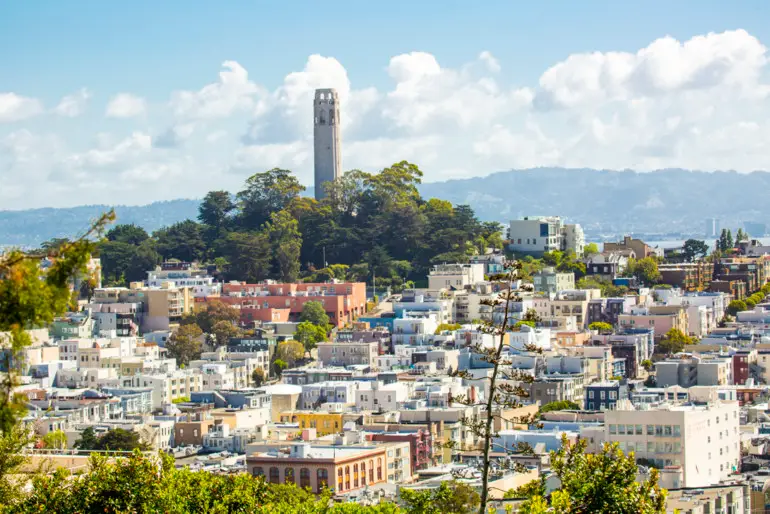Towers in San Francisco have always been indicators of a new awakening.
SAN FRANCISCO’S current financial and global strength may be measured by its ever-rising skyline. Even throughout the city’s booms and busts, its towers have always been a symbol of power.
The first of those, the Chronicle and Call buildings — skyscrapers in their day — withstood the 1906 quake. After fires ravaged the city, developers looked to the structures as models for more opportunities up in the clouds. The 1920s saw a number of neo-Gothic and gilded art deco high-rises sprouting up around Market Street; the Great Depression effectively put a halt to the frenzy, save for one outlier: the colorful Lillie Hitchcock Coit’s tower on Telegraph Hill, in North Beach.
A slim cylindrical column, 180 foot in diameter at the base, tapering to 32 feet, and 210 feet high, Coit Tower is one of the spotlit landmarks you can see on the right while entering the city from the Bay Bridge. It was built at the behest of Lillie Coit, an eccentric socialite who dressed as a man, roamed around with the city’s aristocratic volunteer firefighters, and on her deathbed called for the then-princely sum of $118,000 “to be expended in an appropriate manner for the purpose of adding to the beauty of the city which I have always loved.”

In the design melee that followed, San Francisco City Hall architect Arthur Brown Jr.’s vision for a tower won the day.
What followed was a symbol of an era rising from the ashes of the Great Depression, as well as an icon today often likened to a fire hose nozzle.
The art moderne column is indeed made of fireproof concrete, and many modern-day firefighters do view it as a shrine to their matron saint — although architects at the time denied any such visual connection.
In 1934, the tower’s labyrinthine interior displayed some of the first murals in the Public Works of Art Project, a precursor to the Works Progress Administration, which was the largest New Deal agency when created in 1935. The large group of Coit Tower muralists took inspiration from Diego Rivera’s politically charged fresco-style murals, but also painted in egg tempera and oil on canvas.
Today the tower’s 27 murals — ascending three levels to depict the three themes of recreation, industry and commerce — remain relevant to the business and preoccupations of this city. Oddly, the murals on the upper levels were rarely viewable by the public, due to capacity limitations within the narrowing tower and its stairwells. But after a recent restoration, small groups of visitors are able to take guided tours of all the murals.

Coit Tower was eventually superseded by even taller buildings during the 1960s, and those structures marked the dawn of another forward-looking building boom lasting 20 years. After a 20-year hiatus following the height limits of the ’80s, we’re seeing another thrust upward, a cityscape of “hills” made of office towers and residential buildings south of Market, echoing the natural topography. Of them, the former Transbay Tower, renamed for anchor tenant Salesforce and soon to feature the tallest public art installation in the United States, is a new symbol — perhaps not as beloved as Coit’s — of a city always aspiring to greater heights.

PHOTOS BY:
JACK WOLFORD (NEW)
HISTORY CENTER, SAN FRANCISCO PUBLIC LIBRARY (HISTORICAL)
ALAMY (MURALS)

